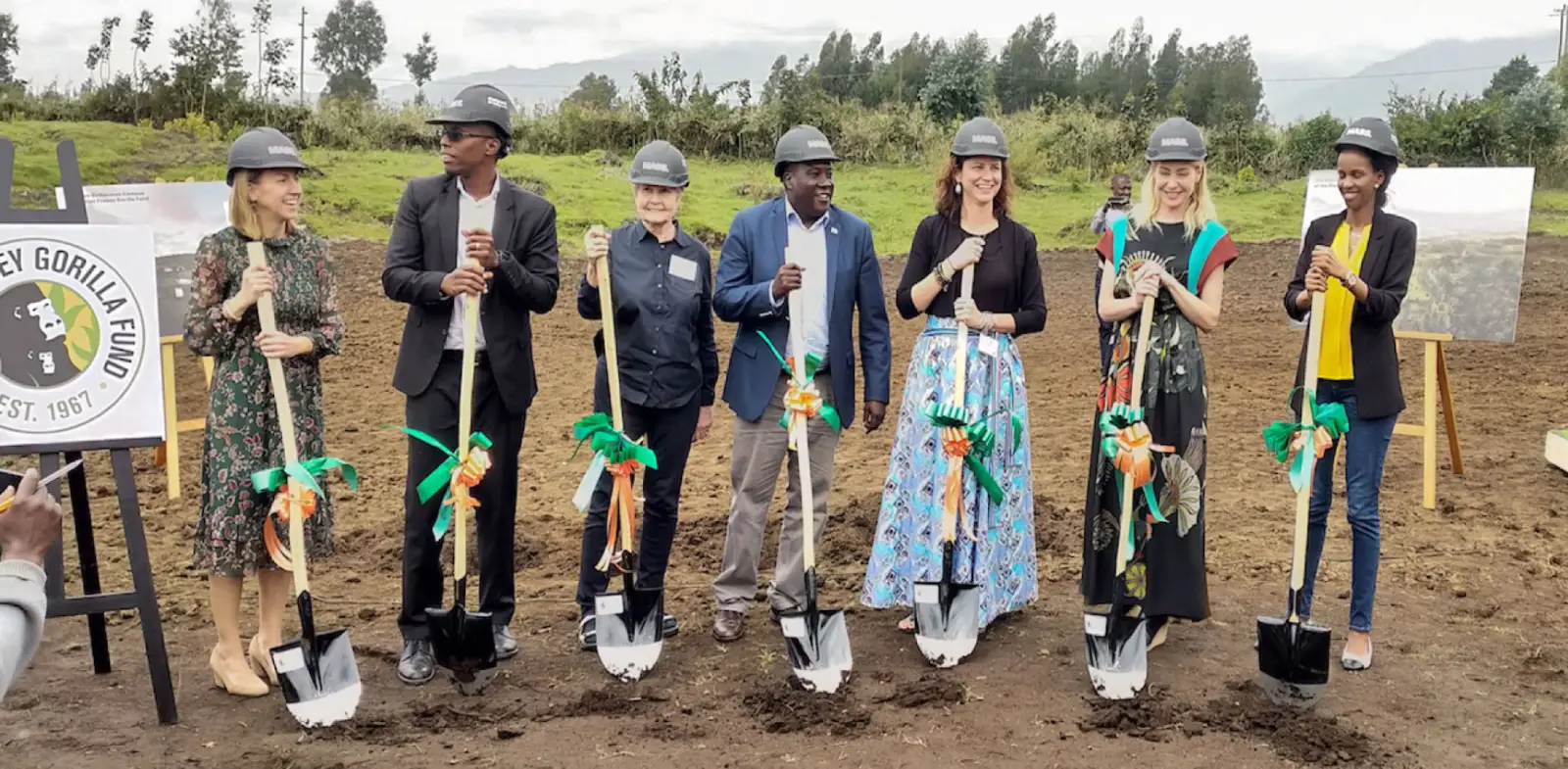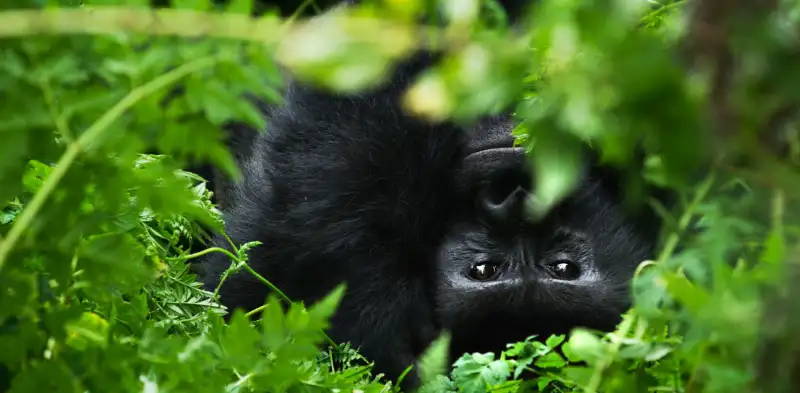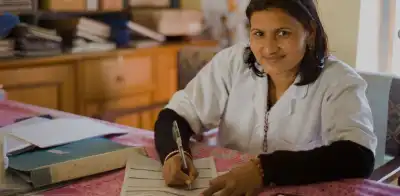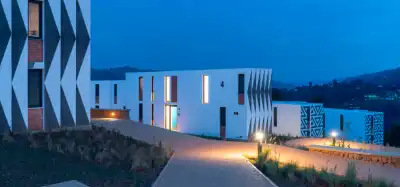This piece is Part Two of a two-part series featuring MASS Design Group.
Part One: Advocacy Through Architecture With OKRs
In the Virunga Mountains, a range of extinct volcanoes that border the Democratic Republic of Congo, Rwanda, and Uganda, mountain gorillas are in a fight for their survival. Habitat loss, poaching, disease, and civil unrest are just a few threats the species faces in the battle for its existence .
Yet, despite all these threats, their numbers are increasing. In the 1980s, only 254 Virunga mountain gorillas remained and it was predicted that they would be extinct before the year 2000. Instead, the population has slowly increased to its current number of 604, placing the global mountain gorilla numbers at 1,059.
The Fossey fight
The Dian Fossey Gorilla Fund International is a strong presence in the fight for mountain gorilla’s survival. These “gorilla game changers” have built a powerful legacy of researching and protecting mountain gorillas to ensure they have the best chance possible for a future. The Fossey Fund’s over-50 years of successful conservation work in saving gorillas was strengthened by the legacy of Dr. Dian Fossey, founder of the Karisoke™ Research Center in Rwanda’s Virunga mountains. Fossey was the first woman to be accepted by mountain gorillas.
Heralded as one of the most legendary scientists in history, Fossey was an American conservationist and one of the foremost primatologists in the world. Her most famous work was in the mountain forests of Rwanda, where she extensively studied the ecology, demography and social organization of endangered gorilla groups for nearly 20 years.
Although her life was tragically cut short, her vision lives through Dian Fossey Gorilla Fund International which is dedicated to the conservation, protection, and study of gorillas and their habitats in Africa. It is the largest and oldest organization focused entirely on gorilla conservation in the world. However, the Fossey Fund’s work does not end with gorillas — it also focuses on studying the larger biodiversity of the region, building the next generation of conservationists and scientists and serving the local community.
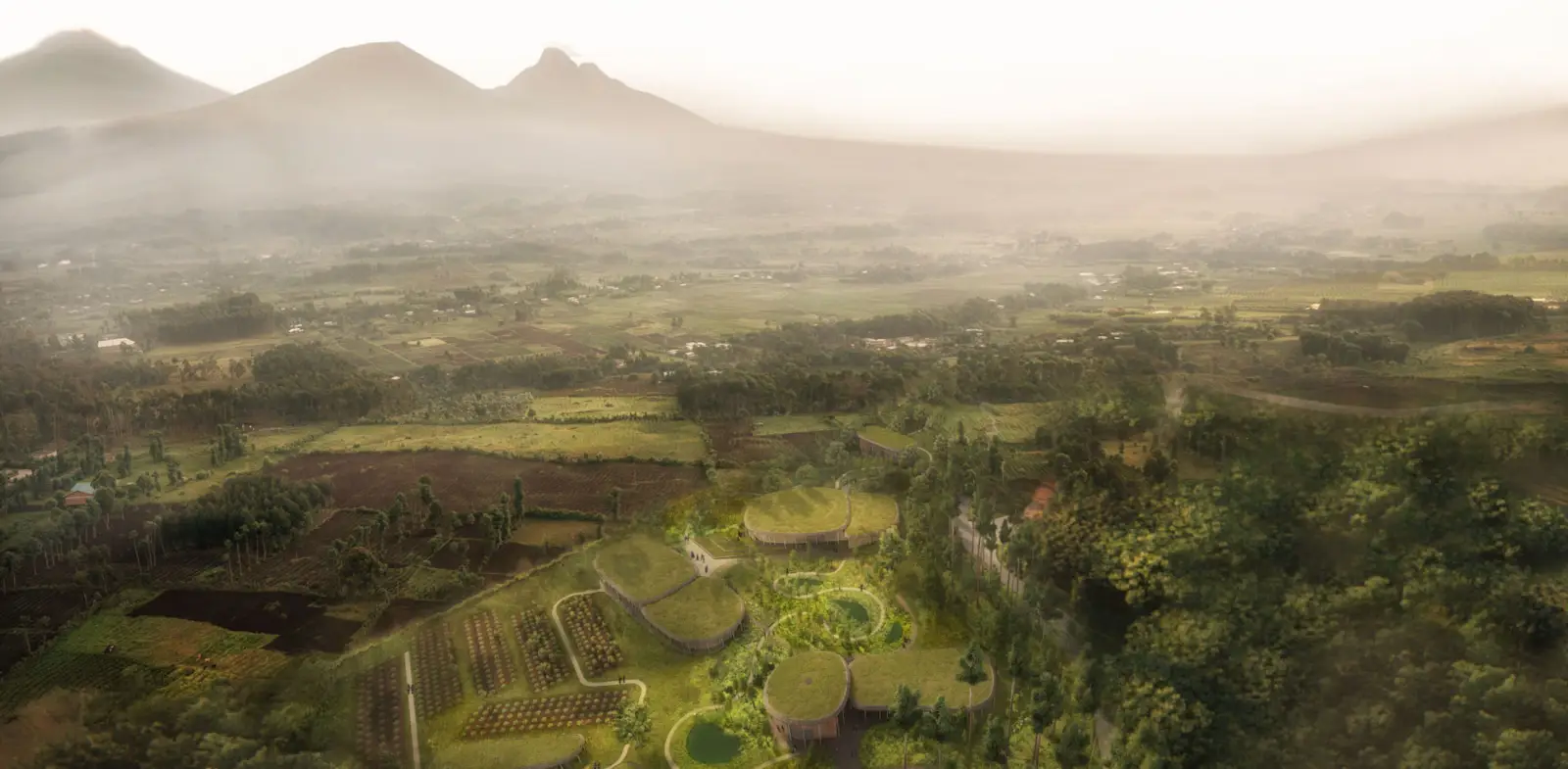
Building on a strong legacy for a new future
Currently operating from a rented facility over 18 miles away from the gorillas, the Fossey Fund needed a new home with more space to support their work and vision.
The Ellen Fund, founded in 2018 by Portia de Rossi as a gift to her partner Ellen DeGeneres to support global conservation efforts for endangered species, sought to meet this need by supporting the Fossey Fund to build a permanent home. The Fossey Fund’s future headquarters, “The Ellen DeGeneres Campus of the Dian Fossey Gorilla Fund,” is the inaugural project of the Ellen Fund.
MASS Design Group, a Boston- and Rwanda-based architecture firm, is leading the design and construction of the new headquarters in Rwanda. A nonprofit and mission-forward firm, MASS’s mission is to research, build, and advocate for architecture that promotes justice and human dignity. MASS began its partnership with the Fossey Fund in October of 2017.
Emily Goldenberg, MASS Design Group’s Project Manager for the Ellen DeGeneres Campus, believes the partnership was a perfect match from the start.
“Right away [we were] really excited about the partnership because as organizations we are all very much aligned in our value system and our history in working in Rwanda,” said Goldenberg.
The mission of the campus is to provide an environment that will enable the Fossey Fund to greatly expand on its work to protect and study mountain gorillas and their forest home, train the next generation of conservationists, and build the capacity of local communities. This purpose-built campus will be home to a Conservation Gallery where visitors can learn about the legacy of Dian Fossey and other conservationists in the region, gorillas and their habitats, and the ongoing conservation efforts.
The new campus will also include an education center equipped with classrooms, a library and computer laboratory and collaborative meeting space all designed to help to train students and conservationists. The research center is equipped with multiple science laboratories and the campus also has on site housing for the more than 400 Rwandan university students who work with the Fossey Fund each year.
The project gives back to the local community as well. Construction will bring an estimated 1,500 jobs to the area, a $2 million spend on local labor and trades, and an estimated $2.5 million spend on local materials.
Goldenberg said, “For me, it’s been incredibly inspiring to work on this project — not only to be able to work with an incredible organization with innate focus on conservation of mountain gorillas and a deep history in conservation efforts in Rwanda, but also to be a part of a bigger picture to develop empathy for conservation activism in Rwanda and what it really means to value mountain gorillas and their precious, unique ecosystem in the Volcanoes National Park.”
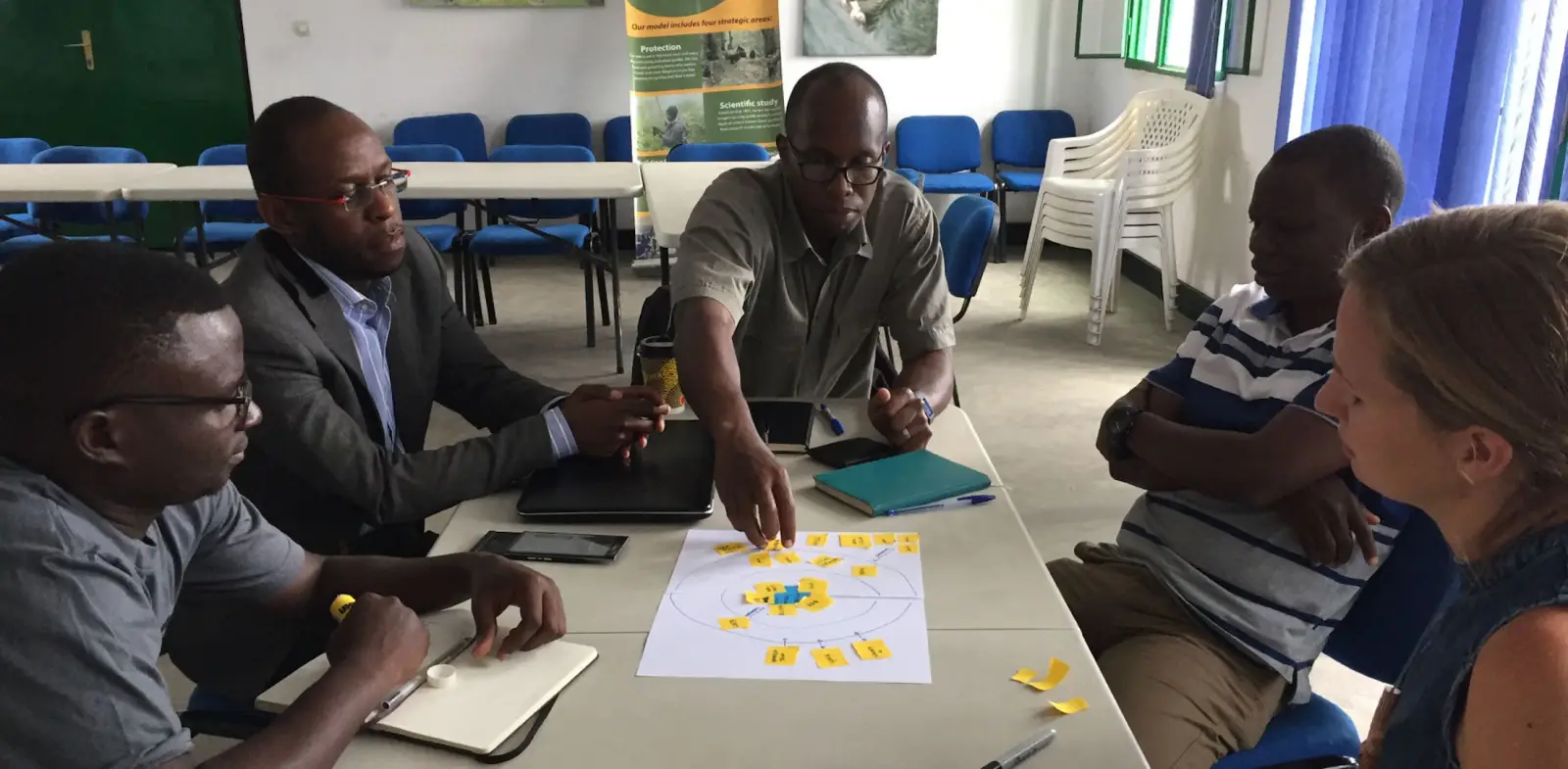
OKRs for a lifetime of conservation
Sustainable architecture, local resourcing, and leading with environmentally-sound practices to keep the footprint as minimal as possible are obligatory priorities of the project. To organize their tasks and remain committed to architectural excellence, MASS is utilizing the Objectives and Key Results (OKR) framework. OKRs help organizations prioritize and outline goals. An Objective is an overarching goal, while Key Results are the metrics used to determine if and how the goal was achieved.
“We’ve been using the entire process as a team but also for personal Objectives and to set personal milestones within our team as well,” said Goldberg. “Specific to this project, (we) have really been thinking about the mission and the goal, which is to make gorillas the entry point for a lifetime of conservation and to do that through this new campus.”
Here’s one of the MASS team’s high-level OKRs they’ve outlined for ensuring the successful completion of the new campus:
Conservation requires community
Building on a Fossey’s legacy of discovery, ingenuity, and compassion for all life, the Ellen DeGeneres Campus of the Dian Fossey Gorilla Fund will shape a new future for mountain gorillas and conservation efforts in Rwanda and globally.
“When you realize the value of all life, you dwell less on what is past and concentrate on the preservation of the future.” — Dian Fossey, Gorillas in the Mist
The Objective and Key Result framework was designed with game changers in mind to help actualize big ideas and ambitious efforts. By managing success and progress, OKRs can align your team’s vision and help build a new future.
This piece is Part Two of a two-part series featuring MASS Design Group.
Part One: Advocacy Through Architecture With OKRs
If you’re interested in starting our OKRs 101 course, click here.
